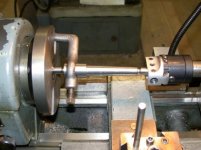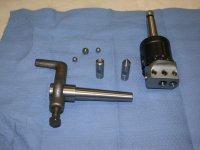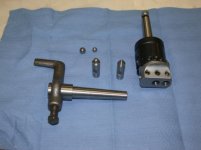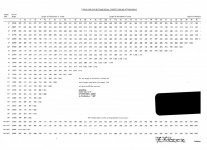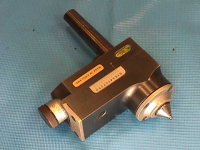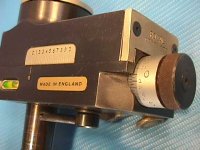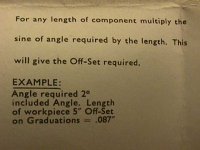Nick Mueller
Titanium
- Joined
- Jun 12, 2006
- Location
- Munich / Germany
Nice trick with the balls!
But I'd use a center drill that is intended for TS-offset work. The don't make a cone, but cut curved "cones".
Also, I don't sweat about trying to exactly offset the TS, but put the bar between centers and sweep the length with a dial indicator (and offset the TS to adjust). Not just that this saves some math (that would not hurt) but it is the most precise setup.
That's the method I use on the cylindrical grinder. And getting the cone right to within 0.01 mm over 200 mm is almost a no-brainer. If you want, you can work your way down to a few µm.
Nick
But I'd use a center drill that is intended for TS-offset work. The don't make a cone, but cut curved "cones".
Also, I don't sweat about trying to exactly offset the TS, but put the bar between centers and sweep the length with a dial indicator (and offset the TS to adjust). Not just that this saves some math (that would not hurt) but it is the most precise setup.
That's the method I use on the cylindrical grinder. And getting the cone right to within 0.01 mm over 200 mm is almost a no-brainer. If you want, you can work your way down to a few µm.
Nick


